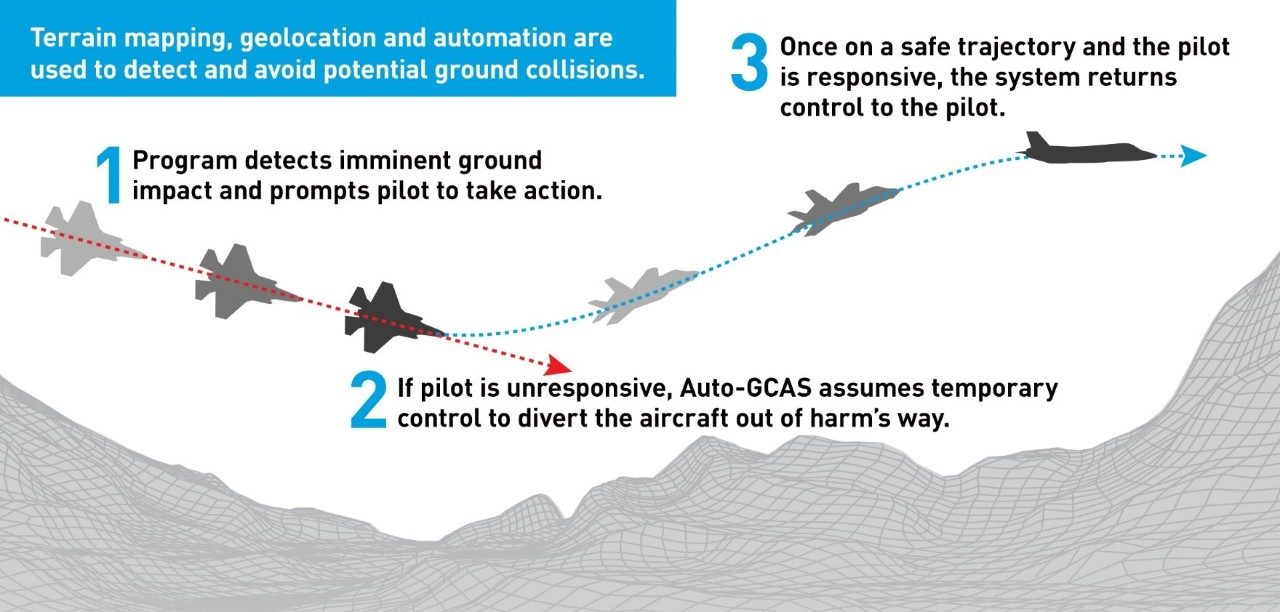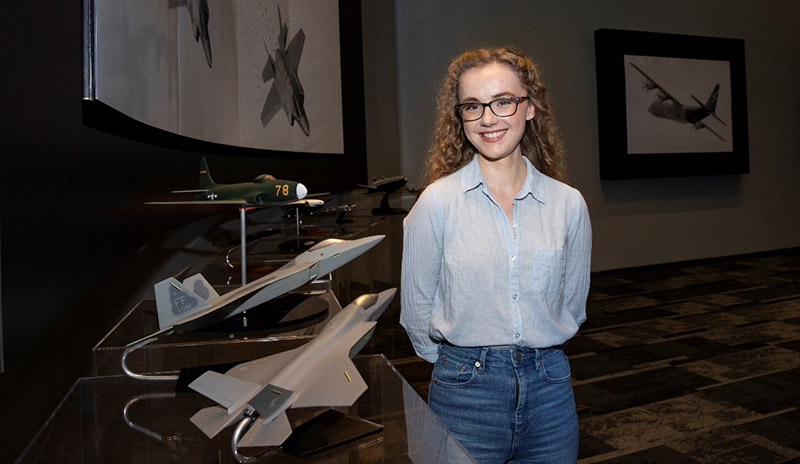
Lockheed Martin has the proven technical expertise and experience to integrate artificial intelligence (AI) and autonomy into systems that operate in extreme and highly varied environments. For us, this starts by building a foundation of trust between human and machine – allowing us to keep people in control while enabling systems to execute safer, more effective tasks.
Here are three technologies we’re working on that demonstrate our track record of trust and transparency:

Meet Your Autonomous Co-Pilot
High-speed fighter aircraft maneuvers can produce g-forces strong enough to knock a pilot unconscious. The Automatic Ground Collision Avoidance System – or Auto GCAS – which Lockheed Martin built with the U.S. Air Force and NASA can autonomously determine if a pilot has lost consciousness and take over control of the aircraft, stabilizing flight until the pilot recovers. This system has already been credited with saving the lives of nine pilots and eight F-16s. In 2019, we integrated Auto GCAS into the F-35 – seven years ahead of schedule.

On-board Sensors, Unite!
Through on-board health monitoring systems, our fixed-wing, rotary-wing and ship operators get the information they need to take action. So instead of making a repair when there’s a failure, we use AI-enabled sensors to predict a failure before it even happens. For example, massive amounts of helicopter data is fed to the Sikorsky Commercial Customer Care Center, where we monitor flight information coupled with on-board sensor data, to provide real-time predictive support on our S-76D, S-92 and S-70i helicopters. These algorithms also combine maintenance history with external factors and flight hour predictions to improve inventory forecasts. Rooted in providing safety and trustworthy solutions, we’ve seen our Customer Care Center drive mission readiness, aircraft availability and cost efficiencies.

Deep Space Travel, Made Easier
Imagine you’re in orbit around Mars, some 140 million miles away from Earth, and something goes wrong. You can’t pick up the phone because it’s going to take 20 minutes for your signal to reach Houston. What do you do?
Meet, MAIA (pronounced “Maya”), our Model-Based Artificial Intelligent Assistant designed to give the right answers to astronauts when it matters most. Think of it like Alexa in space. MAIA constantly learns by accessing data from a digital copy of the spacecraft, distilling meaningful information for the crew to effectively solve problems. This isn’t about automation as a way to execute tasks, but rather about autonomy; so the crew doesn’t have to worry about distance-driven communication challenges.

What Does it Take to Become an Autonomy/AI Pro?
“AI and autonomous systems give us the ability to solve extremely difficult problems that were once deemed impossible.”
Meet Jordan, a Lockheed Martin software engineer based in Fort Worth, Texas, whose passion for Science, Technology, Engineering and Math (STEM) led her to a job in AI:

What’s the most exciting part of your job?
I'd have to say working with an extremely smart and experienced team. It's like being surrounded by the best tutors imaginable, and I have access to them all the time! It's pretty much a dream come true.
What sparked your passion for exploring this exciting new frontier of AI /Autonomy?
I'd say my passion is solving problems. From my experience, AI and autonomous systems give us the ability to solve extremely difficult problems that were once deemed impossible. As our hardware, software and capabilities grow increasingly complex, solving all problems deterministically is no longer an option. It is the potential for solving these incredibly complex problems that sparks the ultimate passion.
What is the difference between AI and autonomy?
At the most basic level, I think of AI as a family of tools, each of which has different strengths, weaknesses and applications. More specifically, AI is a family of algorithms capable of interpreting data, learning from this data, and using that learned information to achieve specific goals and tasks. This is notably different from autonomy, which can be based on deterministic solutions, such as scripted behavior.
What advice do you have for engineering students interested in pursuing a career in STEM?
Actively seek out expertise in your field of interest and ask questions early and often. I spent too much of my life being afraid of sounding unintelligent, and it made it so much harder to learn new skills. Pursue projects or roles that make you uncomfortable. I always experience the most technical and personal growth after being thrown into the deep end.
Apply your STEM knowledge. Using STEM concepts and theories to solve real world problems makes that knowledge yours. You begin to develop an intuition for solutions to problems you see happening around you.
Do you have a favorite Lockheed Martin autonomous or unmanned system?
Auto GCAS immediately comes to mind. It's absolutely incredible what that team has done, and the difference the system has made saving lives.
Whether it’s a natural disaster or a combat situation, first responders and military personnel know they can rely on our trusted AI-enabled and autonomous systems. As these technologies evolve, we’ll continue to embrace this critical foundation of safety, human-machine collaboration and trust.
Interested in helping advance autonomy and artificial intelligence? Check out our job openings and see how you can help create technology that helps save lives and advances scientific discovery.




